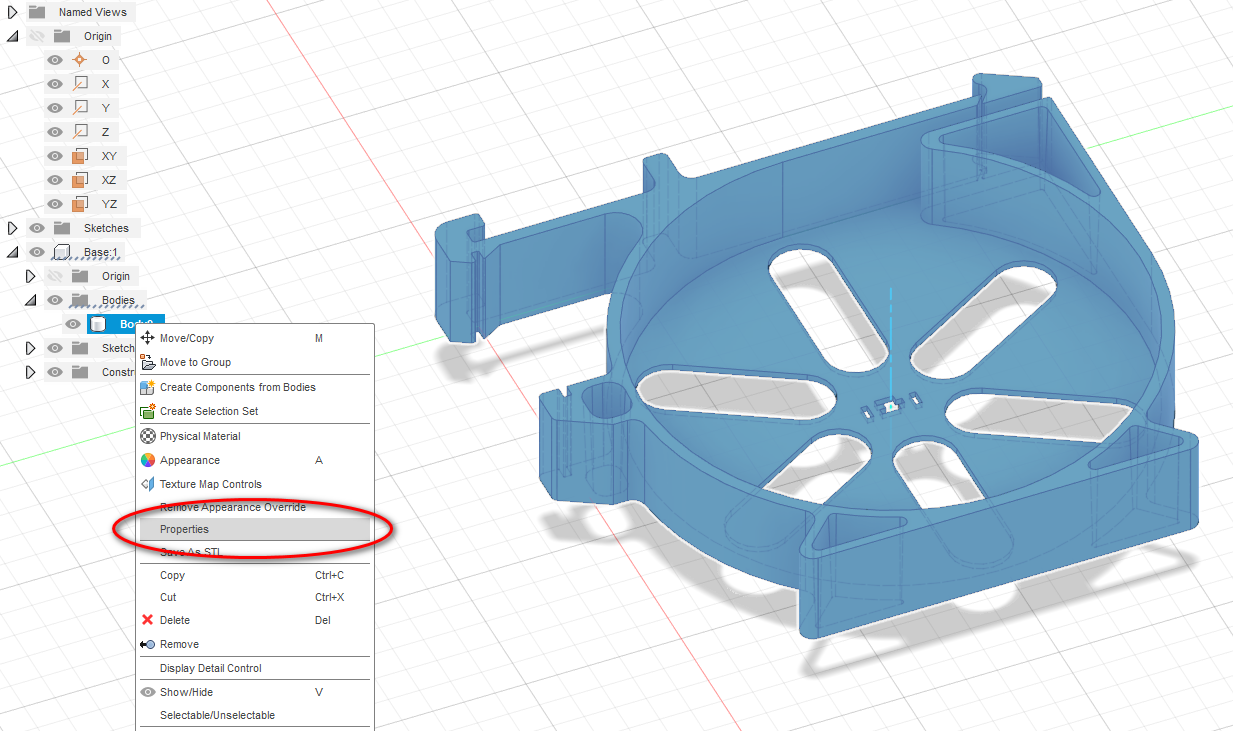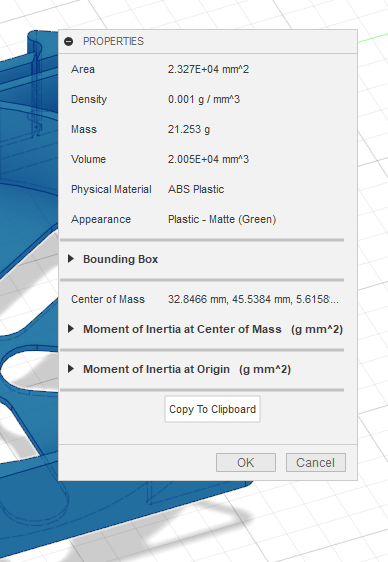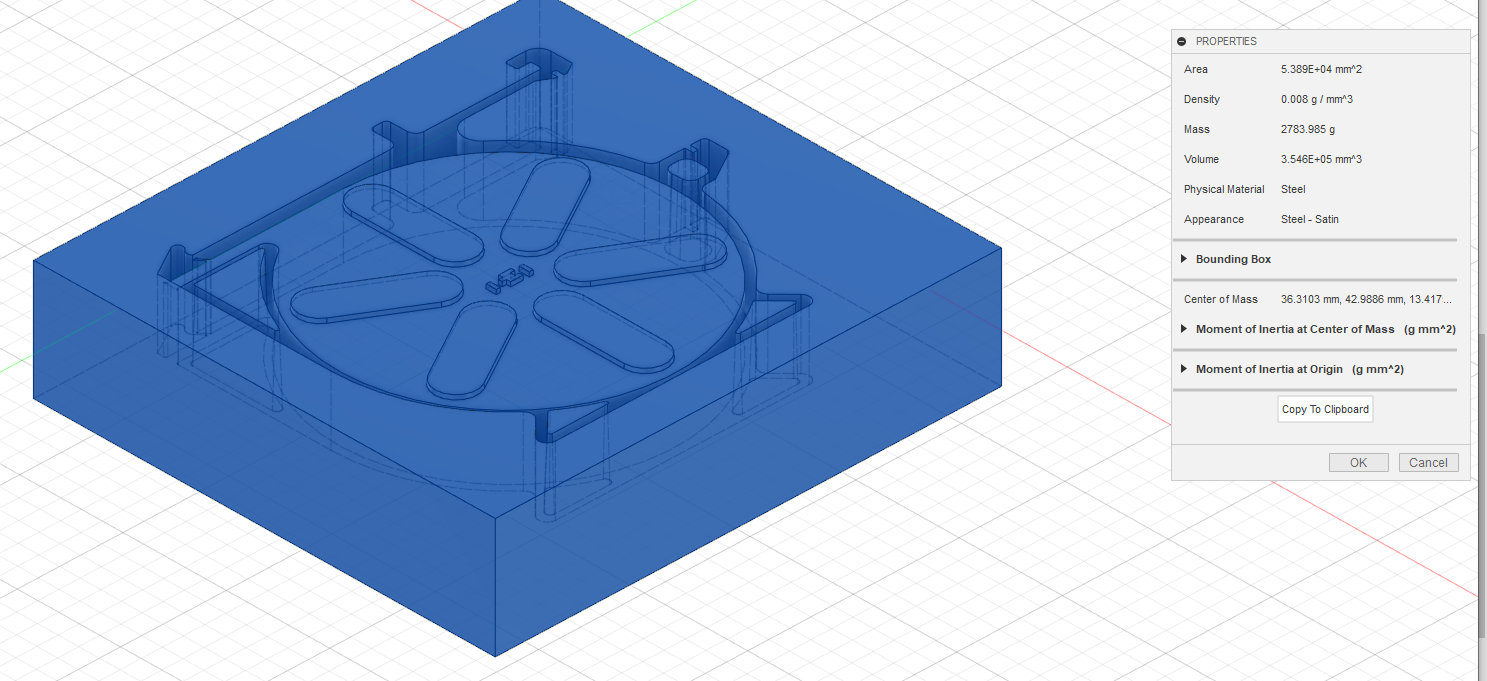So, what's this going to cost?
For the cast material I want something that's going to be semi-rigid so that it doesn't break when I clip it to a DIN rail. I'm thinking about using MD 50 from BJB. I haven't used it before, but the spec sheet sounds pretty good.
How much do I need?
Conveniently, Fusion360 knows how big solids are and has that info under the Properties menu option


My 80mm internal diameter magazine has a volume of 2e4 mm^3
I was brought up badly and so my brain needs that in different units:
2*10^4 mm^4 = 1.22 in^3 = 0.68 fluid oz (us)
The MD-50 spec sheet says the gallon kit gives 301 cubic inches of material. Fudging the volume up to 1.25: 300 / 1.25 = 240. Now, I have no plans to make 240 of these things, so per-part cost estimates here are going to be a mental exercise.
The gallon kit costs $114. Assume taxes and shipping push that to $130. $130/240 = $0.54. If I screw up a bunch $130/200 = $0.65
So far so good
According to Cura my 3d print of the same part consumes 21g of filament.
If I pay $30 for 2kg of filament: ($30/2000g) *21g = $0.315
I'm trying to tell myself comparing PLA to resin is like comparing plywood to oak.
Now for the mold.
Previously I've used a couple different silicone types from smooth-on. That works but it's a bit on the expensive side.
How much do I need?
I need at least one mold, but in order for this to make any sense I either need a bunch of molds or I need a mold that has a very low cycle time. MD-50 takes 4 hours before it comes out of the mold, so it'll have to be multiple molds.
Starting with one mold.
Adding 12mm of thickness outside my magazine I wind up with a mold that looks like this:

It has a volume of 3.546e6 mm^3 = 21.6 in^3 = 12oz
I can get a gallon of silicone for about $130 and I can get about 10 molds out of that kit, so $13/mold
Let's pretend I'm going to scale up and make all 240 magazines.
$130 + 130 = 260
260 / 240 = $1.08 per unit
If I could cycle the molds 3 times in a day that would allow for a production rate of 30 per day.
That's starting to sound promising, but there's a lot of room for improvement.
 Matthew Reeves
Matthew Reeves
Discussions
Become a Hackaday.io Member
Create an account to leave a comment. Already have an account? Log In.